 Most people when they think of forensic psychology think about violent murderers who are being poked and prodded to find out which nerve will turn off the murderer gene but in fact it is a lot more complicated than that.
Most people when they think of forensic psychology think about violent murderers who are being poked and prodded to find out which nerve will turn off the murderer gene but in fact it is a lot more complicated than that.
Most forensic psychologists are actually trying to find characteristics about all humans that could lead to these behaviours and are trying to find ways to detect and prevent criminals from committing crime in the first place.
Here are 10 really fascinating psychologists and their studies that should whet your appetite for one of the most lively areas of psychology.
1. William Stern – Eye Witness Testimony
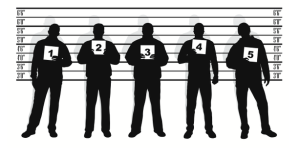 In the very early years of psychology some of the most ground breaking and interesting discoveries were made. While this is due largely to the lack of any ethical requirements for studies it sure did throw out some interesting results and psychologists.
In the very early years of psychology some of the most ground breaking and interesting discoveries were made. While this is due largely to the lack of any ethical requirements for studies it sure did throw out some interesting results and psychologists.
One of these ‘fathers’ of psychology, William Stern, who was the inventor of the I.Q test, came up with an interesting theory and decided to test it.
In 1901 during one of his lectures at the University of Breslau he decided to conduct an experiment of his own by staging a fight half way through.
The fight went on until one of the combatants decided to pull out a revolver at which point the professor stopped the fight.
After this, William asked all of the students that had observed the fight to write down what they had seen and all of them came up with anywhere between 4 and 12 errors on their reports.
This study and his genius eventually lead the way into the study of eye witness testimony and helped us to start finding out that leading questions, the events that have happened since the incident and the age of the witness can have a massive impact on the accuracy of a testimony.
2. Hugo Munsterberg – On the Witness Stand
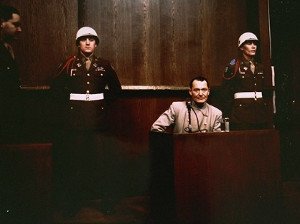 Munsterberg was a noted scholar from the early 20th century who is remembered in forensic psychology for his work in the field of witnesses.Now that the field of psychology has developed we know that perception can drastically alter our memory of a certain event. Massive stress levels or heightened emotions can change what we remember as ‘the truth’ but before Munsterberg all witnesses were thought to simply remember the facts and deliver them perfectly.
Munsterberg was a noted scholar from the early 20th century who is remembered in forensic psychology for his work in the field of witnesses.Now that the field of psychology has developed we know that perception can drastically alter our memory of a certain event. Massive stress levels or heightened emotions can change what we remember as ‘the truth’ but before Munsterberg all witnesses were thought to simply remember the facts and deliver them perfectly.
He brought forward the idea that a persons schemata, (memory associations of certain things i.e knife has associations with kitchen, stabbing and food) judgements and suggestions can alter memory even if that person has no desire to lie or change their testimony.
One of the experiments he liked to perform regularly on his students was to ask them to write down a description of what they were about to see as carefully as they could.
He would then show them a piece of white cardboard with a certain number of black dots on it for 5 seconds and ask them to write down how many dots were on the card.
Even when they were paying attention, knew that something was coming that they had to remember and had time to contemplate their answers the students would sometimes give a number that was up to 7 or 8 times that of other students in the room!
This added fuel to his argument that witness testimony should not be taken at face value and that their prejudices and personalities should be taken into account.
3. Stanley Milgram – Obedience
 Milgram is the man who came up with the idea for the obedience experiment which has become one of the most famous psychological studies of all time.The study, which has been successfully replicated several times since, involves a participant being asked by an experimenter to ask another participant questions and if they get the questions wrong then they get an electric shock.
Milgram is the man who came up with the idea for the obedience experiment which has become one of the most famous psychological studies of all time.The study, which has been successfully replicated several times since, involves a participant being asked by an experimenter to ask another participant questions and if they get the questions wrong then they get an electric shock.
What they don’t know is that the participant that they are asking questions to is actually just a voice recording that they play to all participants and is the same for everyone.
As the experiment goes on the voice recording starts to get more and more questions wrong forcing the actual participant to keep upping the level of electric shock they think they are delivering to a real person.
Eventually the recorded voice starts to scream at the electric shocks, says he has a problem with his heart and finally stops making any sound what so ever.
Throughout this the participants usually get very stressed and think about stopping the experiment but the authority figure standing nearby in a white lab coat delivers 4 set instructions to continue before they will actually stop the experiment.
The instructions were:
Prod 1: Please continue.
Prod 2: The experiment requires you to continue.
Prod 3: It is absolutely essential that you continue.
Prod 4: You have no other choice but to continue.
All of the participants reached a level of 300 volts and nearly two thirds of all participants made it to 450 volts which quite worryingly just had XXX on the label.
This experiment shed a bright light on the area of obeying authority figures and has close parallels to the attitude in Germany during the second world war. How different is it really from flipping the switch in a gas chamber?
4. Thomas Bond – Jack The Ripper Offender Profiling
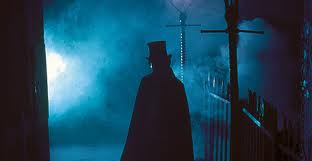 Thomas Bond is considered by many to be the first person to use offender profiling in an official capacity to try and actively locate a criminal and has revolutionized the way in which we track and capture serial killers.Because of their very nature serial killers are hard to catch, often choosing to be very secretive and ordered in the way they commit a murder to both stop from getting captured and to fulfill their desires.
Thomas Bond is considered by many to be the first person to use offender profiling in an official capacity to try and actively locate a criminal and has revolutionized the way in which we track and capture serial killers.Because of their very nature serial killers are hard to catch, often choosing to be very secretive and ordered in the way they commit a murder to both stop from getting captured and to fulfill their desires.
Offender profiling is the process of looking at all of the clues from the various murder scenes and seeing if there are any commonalities between them. Searching for patterns in behaviour that might link the murders together and give a clue to the murderers personality.
Because of his work in the metropolitan police Thomas Bond was asked to share his opinion on the Jack the Ripper murders and what the murderer would be like. The difference this time around was that he gave information on what he thought the murderers habits and personality were giving examples like:
The murderer must have been a man of physical strength and of great coolness and daring. There is no evidence that he had an accomplice. He must in my opinion be a man subject to periodical attacks of Homicidal and erotic mania. The character of the mutilations indicate that the man may be in a condition sexually, that may be called satyriasis. It is of course possible that the Homicidal impulse may have developed from a revengeful or brooding condition of the mind, or that Religious Mania may have been the original disease, but I do not think either hypothesis is likely. The murderer in external appearance is quite likely to be a quiet inoffensive looking man probably middle aged and neatly and respectably dressed. I think he must be in the habit of wearing a cloak or overcoat or he could hardly have escaped notice in the streets if the blood on his hands or clothes were visible.
Today when serial killers are uncovered, building an offender profile of them to narrow down the suspects is one of the first avenues explored to capture the killer.
5. David Canter – Investigative Psychology and the Railway Rapist
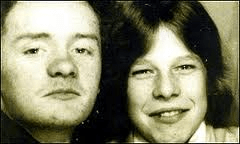 Canter is the founder of investigative psychology as well as a pioneer in the use of offender profiling in the UK having generated a profile for the railway killers of the 1980’s.While working on this case police were stumped and horrified at how fast the rapes and murders were being committed and so saw that they had to try something new to catch the killers. To do this they invited David Canter to come and generate a profile of the killers, the first time this had ever been used in the UK.
Canter is the founder of investigative psychology as well as a pioneer in the use of offender profiling in the UK having generated a profile for the railway killers of the 1980’s.While working on this case police were stumped and horrified at how fast the rapes and murders were being committed and so saw that they had to try something new to catch the killers. To do this they invited David Canter to come and generate a profile of the killers, the first time this had ever been used in the UK.
The profile that he created was remarkably detailed for the amount of information that Canter had to go on and put one of the perpetrators to the very top of the suspects list.
Canter came up with 17 characteristics of the potential murders and out of those 13 of them turned out to be accurate. To give an example here are some of the profile characteristics that he got right:
• male in his mid-late twenties
• poor relationship with women but has probably been married
• considerable sexual experience, potentially with bondage
• a couple of close male friends
• experience with police or knowledge of procedures (he combed the victim’s pubic hair to remove evidence of his own)
• probably not physically strong (he used restraints but only enough control to rape)
• potentially semi-skilled work
• knowledge of the railway
• worked/lived nearby crime scene
While working on this case Canter also combined his skills of having worked in the area of environmental psychology (how people react around buildings on an ordinary day and when fires occur) with his offender profiling skills to develop a new area of psychology known as investigative psychology.
Investigative psychology looks at the actions of offenders and the reasons behind why people would commit crimes. Also it stresses that through the use of scientific psychology we can analyze the reasons behind other crimes such as arson and burglary rather than just murders which have an obvious psychopathic component to them.
6. William Marston – Lie Detector
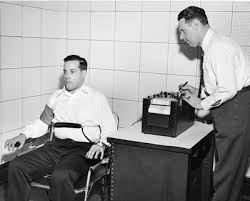 William Marston was a student of Munsterburgs and was an inventor as well as a psychologist. One of his most famous inventions he came up with was the blood pressure test. Strangely enough he got the idea from his wife saying that when she got mad her blood pressure seemed to rise.This got him thinking about the link between blood pressure and emotions and decided to try and find a link between lying and blood pressure.
William Marston was a student of Munsterburgs and was an inventor as well as a psychologist. One of his most famous inventions he came up with was the blood pressure test. Strangely enough he got the idea from his wife saying that when she got mad her blood pressure seemed to rise.This got him thinking about the link between blood pressure and emotions and decided to try and find a link between lying and blood pressure.
He championed the polygraph test which was invented by John Larson in 1921 with the help of his blood pressure test and hailed its use in criminal cases.
Another way in which he contributed to the field of forensic psychology is that he was the first expert witness in a legal case in the US who didn’t have a medical degree. This was in 1923 in the case of Frye v United states and set the Frye standard which is a legal precedent, still used in some states, which says that all tests that are generally accepted in that scientific community are admissible.
Previously expert witnesses were only considered expert if they had a medical degree or doctorate and this move into people who were considered expert in other fields added greatly to the credibility of psychology.
Totally unrelated to psychology but none the less an interesting fact about an interesting man is that Marston was the creator of the character Wonder Woman. Some people have theorized that this is related to his work in psychology in which he personally believed that women were more reliable and could work faster and more accurately than men.
7. Wilhelm Wundt – Science of Psychology
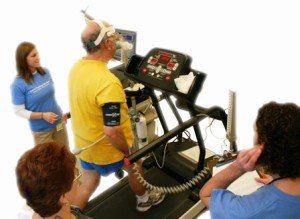 Wilhelm is one of the earliest forensic psychologists in this list and also one of the most important. In 1879 he developed the scientific methodology that is still used in applied psychology today.To add credibility to the field Wilhelm helped to standardize the way in which psychology tests were carried out in an effort to make them more scientific and take away the subjective element to the psychology of the time.
Wilhelm is one of the earliest forensic psychologists in this list and also one of the most important. In 1879 he developed the scientific methodology that is still used in applied psychology today.To add credibility to the field Wilhelm helped to standardize the way in which psychology tests were carried out in an effort to make them more scientific and take away the subjective element to the psychology of the time.
This scientific method allowed psychologists to study the effects of the media on eye witness testimony reports, identify mental and abnormal behaviour and look for damaged parts of the brain. This opened up the area of the law that deals with mental disorders and whether people who are not mentally stable can really know what they are doing.
Because of his prominent place in psychology and his pioneering of this method he was the teacher of several others in the field including Cattell and Munsterburg (both of whom are in this list!).
8. Alfred Binet – Intelligence Tests
 Binet was another pioneer for the field of psychology as a science and helped to co-found the first psychological laboratory in France in 1889.
Binet was another pioneer for the field of psychology as a science and helped to co-found the first psychological laboratory in France in 1889.
During the early part of his career he studied both medicine and law and this lead him to take particular interest in how psychology could be applied to law and the efficacy of eye witness testimony.
What he is now famously remembered for however is his work into intelligence testing as well as psychology testing in other areas. The most famous of these developments was the Simon-Binnet Scale which was designed to try and filter out which children were right for mainstream education and which had special educational needs.
The test was standardized against a large sample so that the results would be representative. So for example to get a mental age of eight the child would have to answer all of the questions that the average 8 year old would be able to answer.
One of the reasons that his work is remembered so well today is that it was taken over to the US and then translated. Americans took great interest in this form of testing and used it not only with education but with the military and business as well.
The attitude of Americans of the day with a diversifying population allowed the test to be use to “curtail the reproduction of feeble-mindedness and in the elimination of an enormous amount of crime, pauperism, and industrial inefficiency (p.7)” Terman, L., Lyman, G., Ordahl, G., Ordahl, L., Galbreath, N., & Talbert, W. (1916).
Although it wasn’t Binets original purpose this scale was used as a way of enhancing the intelligence of a nation based on the results and affected Americans education and employment prospects. It was also used in some circles as justification for preventing ‘non intelligent people’ to breed (a scary thought).
9. Walter C. Langer – The Mind of Adolf Hitler
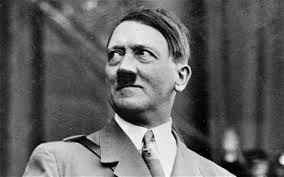 While Walters contribution to psychology hasn’t been huge he had to be included in this list because of the man he was chosen to do a profile on. The biggest tyrant of all time, Adolf Hilter.During World War two Langer was commissioned to come up with a psychological profile of the famous dictator in an effort to try and find any weaknesses he might have, to try and predict his decisions and create counter propaganda.
While Walters contribution to psychology hasn’t been huge he had to be included in this list because of the man he was chosen to do a profile on. The biggest tyrant of all time, Adolf Hilter.During World War two Langer was commissioned to come up with a psychological profile of the famous dictator in an effort to try and find any weaknesses he might have, to try and predict his decisions and create counter propaganda.
Some of the conclusions drawn were very interesting and I’m sure would have been hated by the dictator himself. They include the theory that he was probably homosexual and was impotent in a heterosexual relationship. He enjoyed a masochism in his heterosexual sex life and probably liked it when women urinated or defected on him.
A hint to the accuracy of this profile is that it also predicted that if defeat for Germany was near he would commit suicide which of course he did.
10. Dr. Saul Kassin – False Confessions
 The last person on this list but most definitely not the least, Dr. Saul Kassin, was the first person to look in depth at the field of false confessions and developed the three different categories that we place people who admit false confessions into. The three categories are voluntary, coerced-compliant and coerced-internalized.Voluntary confessions could be committed for reasons which usually divert attention away from the real criminal. A mother protecting their children or a partner who is trying to stop their partner losing their driving license.
The last person on this list but most definitely not the least, Dr. Saul Kassin, was the first person to look in depth at the field of false confessions and developed the three different categories that we place people who admit false confessions into. The three categories are voluntary, coerced-compliant and coerced-internalized.Voluntary confessions could be committed for reasons which usually divert attention away from the real criminal. A mother protecting their children or a partner who is trying to stop their partner losing their driving license.
Coerced – compliant is when the person confesses for a reward or less of a punishment like a deal to give them less prison time or extra privileges. Police use versions of this in interviews when they are putting a lot of pressure on the suspect and then hint that as soon as the suspect confesses they will stop.
Internalized confessions happen when the the person actually comes to believe that they have committed the crime.
As well as this pioneering work Kassin also did some work recently on how police interrogations can cause some people to deliver a false confession and submitted some advice to police on how interrogation techniques should be changed to account for this.
Even after all this he still has time to testify as an expert witness in the U.S in State, Federal and Military court.